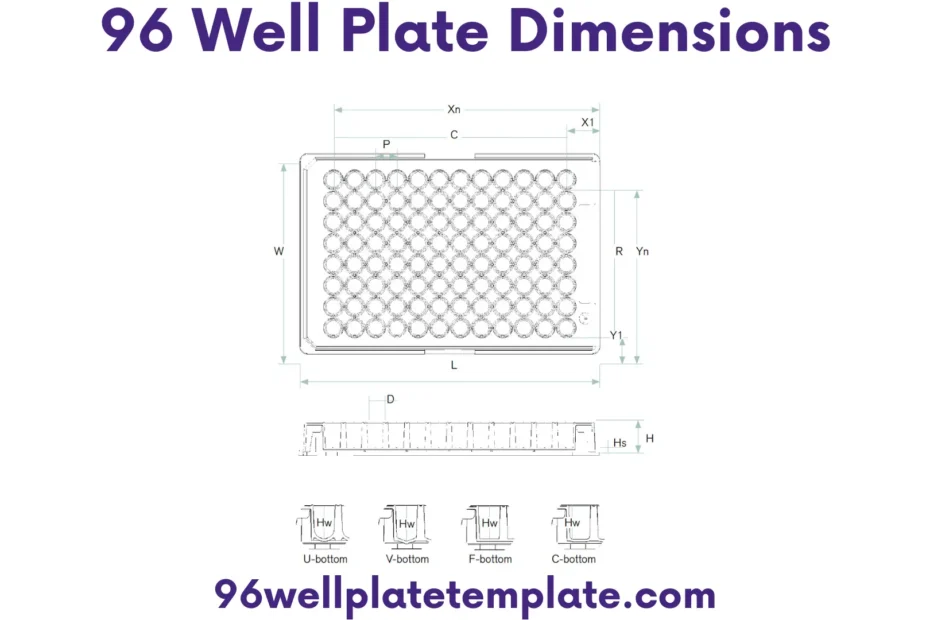The Unseen Backbone of Biotech Research
96 well plates may not be the most glamorous piece of lab equipment, but they are indispensable. These plates are pivotal in high-throughput screening, where researchers test many samples simultaneously. Each well acts as a mini test tube, allowing for precise measurements and reactions. Their standardization means that experiments can be reproduced across labs worldwide, ensuring consistency in research findings.
But why exactly do these plates matter so much? Their design allows for the simultaneous handling of multiple samples, saving time and resources. Additionally, the uniformity of these plates facilitates automation, which has become a staple in modern laboratories. Automation not only speeds up processes but also reduces the margin of error, leading to more reliable results.
For science enthusiasts, understanding the role of 96-well plates offers a glimpse into the meticulous and innovative world of lab research. It’s fascinating how a seemingly simple piece of plastic can drive significant scientific discoveries.
Unpacking the Details of 96 Well Plate Dimensions
To the untrained eye, all 96-well plates may look the same, but a closer inspection reveals subtle differences. The standard dimensions of these plates are approximately 127.8 mm in length, 85.5 mm in width, and 14.4 mm in height. However, variations exist to cater to specific experimental needs.
The depth and volume capacity of each well can vary. For instance, some plates are designed with a low profile to minimize reagent use, which is especially useful in cost-sensitive experiments. Conversely, deep-well plates offer a larger volume capacity, making them ideal for assays requiring more significant reagent amounts.
These dimensional variations are not arbitrary. They stem from the need to accommodate diverse experimental setups. Researchers must be familiar with these specifications to select the most suitable plate for their work, ensuring optimal experimental conditions and outcomes.
96 Well Plate Dimensions
| Dimension | Measurement |
|---|---|
| L | 127.71 mm |
| W | 85.43 mm |
| H | 14.10 mm |
| X1 | 14.36 mm |
| Xn | 113.36 mm |
| Y1 | 11.22 mm |
| Yn | 74.22 mm |
| P | 9.00 mm |
| D | 6.94 mm |
| Hw (U-Bottom) | 10.85 mm |
| Hw (V-Bottom) | 11.65 mm |
| Hw (F-Bottom) | 10.65 mm |
| Hw (C-Bottom) | 10.85 mm |
| Columns (1-12) | 12 |
| Rows (A-H) | 8 |

Choosing the Right Plate for Your Experiment
Selecting the appropriate 96 Well Plate Map is not just about choosing a standard size. The specific dimensions and features of a plate can significantly impact the success of an experiment. For instance, opt for a low-profile plate if your assay involves small reagent volumes. These plates not only conserve precious materials but also reduce the chance of evaporation, thereby maintaining the integrity of your samples.
On the other hand, deep-well plates are better suited for applications requiring more substantial liquid volumes. These plates are often used in genomic and proteomic studies, where larger sample sizes are necessary for accurate analysis.
Another consideration is the material of the plate. While most are made from polystyrene, offering good optical clarity for spectrophotometric measurements, other materials like polypropylene may be preferred for their chemical resistance and lower binding properties in certain assays.
Practical Applications in the Lab
The versatility of 96-well plates makes them ideal for various applications. In drug discovery, these plates enable researchers to screen thousands of compounds quickly, identifying promising candidates for further development. Their uniformity and compatibility with automated systems streamline the entire process, making it efficient and reproducible.
In molecular biology, 96-well plates are indispensable for PCR (Polymerase Chain Reaction) assays. The uniform well size ensures even heating, critical for accurate DNA amplification. Likewise, in immunology, these plates are used for ELISA (Enzyme-Linked Immunosorbent Assay) tests to detect and quantify proteins, antibodies, and hormones.
For science enthusiasts, these applications highlight the critical role of 96-well plates in translating complex scientific concepts into practical, real-world solutions. It’s a testament to how simple tools can drive innovation and discovery.
Tips for Selecting the Ideal 96 Well Plate
Choosing the right 96-well plate goes beyond understanding dimensions. Consider the following tips to ensure optimal selection:
- Understand Your Experiment’s Requirements: Determine the type of assay you’re conducting and the volume of reagents you’ll use. This will guide you in selecting the appropriate well depth and volume capacity.
- Consider Material Properties: Polystyrene is excellent for optical clarity, while polypropylene offers chemical resistance. Choose based on the chemical nature of your reagents and the detection method you’ll employ.
- Match with Automated Systems: Ensure the plates you choose are compatible with any automation systems in your lab. This will streamline your workflow and enhance efficiency.
By taking these factors into account, researchers can make informed decisions that align with their experimental goals.
Laboratory Expert’s Verdict:
The world of biotech research is a delicate dance of precision and innovation. While tools like the 96 Well Plate Template may seem basic, they are foundational to successful laboratory work. Understanding their dimensions and applications equips researchers with the knowledge to optimize their experiments, leading to more accurate and reliable results.
For biotech researchers, laboratory technicians, and science enthusiasts, mastering the nuances of 96 well plate dimensions is not just a technical requirement, it’s a pathway to unlocking new frontiers in scientific discovery. Whether you’re setting up a high-throughput screening assay or a simple ELISA test, the right plate makes all the difference.
To explore more and stay updated with the latest in laboratory innovations, consider engaging with our community of experts. Together, we can push the boundaries of what’s possible in the world of science.

